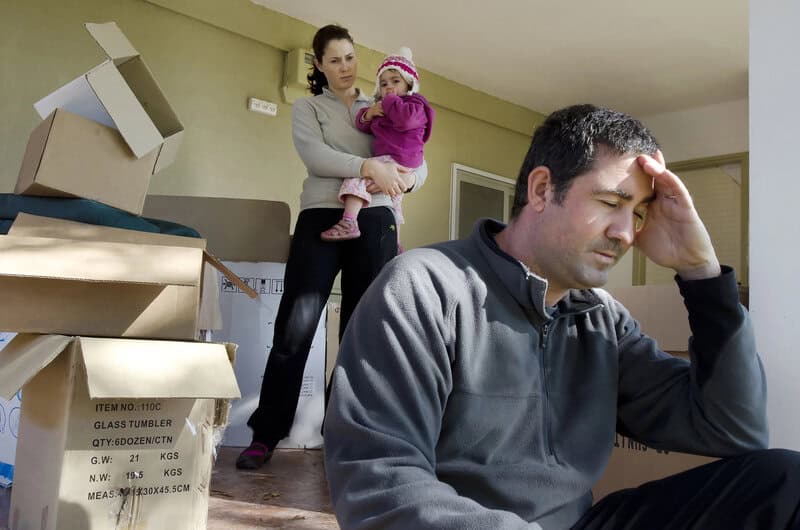When it comes to the business side of divorce, division of assets is often viewed entirely from a financial lens. However, there is so much more to dividing household items and precious possessions than dollars and cents.

Strategies For Splitting Sentimental Assets During Your Divorce
Deep feelings and sentimental attachment to certain assets or household items make it challenging to hold a big-picture view throughout a complicated process. This can lead to unnecessary tension or animosity, which complicates matters.
Here are some proven strategies for dividing sentimental assets during a divorce, ensuring it feels as fair and balanced as possible—and truly honors the lives you lived together, as well as what matters most to each individual.
1. Use divorce mediation or a collaborative divorce process
Using divorce mediation or agreeing to a collaborative divorce process is the best way to minimize the inevitable tension, power struggles, and drama that often accompany divorce. Having neutral parties present to help you both move through the process graciously is one of the best things you can do for yourselves and any children in the mix.
Both mediation and collaborative divorce models focus on working through the dissolution of marriage with the least drama, anger, stress, and financial strain as possible. It doesn’t need to be the War of the Roses, despite what traditional “My Lawyer vs Their Lawyer” divorce models make it seem like.
By choosing to prioritize the protection of one another and the family’s best interests above all else, you’ve already set the stage to minimize the emotional aspect of dividing assets and to handle the division of sentimental items in the best possible way.
2. Know which assets are shared and which are already yours/theirs
California is referred to as a “community property state.” This means that certain assets are protected from being divided during a divorce. Knowing which assets are shared and which are already considered “yours” or “theirs” may alleviate some of the tension, focusing your attention on the shared assets.
Examples of things that are not shared assets include:
- Anything stated and previously agreed upon in a prenuptial agreement (if applicable).
- Assets either individual had before you were married.
- Inheritances (financial or physical property) by one or the other during the marriage (personal inheritances are not part of the community property pot).
- Property owned or deeded to either person before marrying.
Any assets acquired during the marriage are considered equally owned and are typically divided 50/50 during a divorce. And, of course, since things aren’t quite that easy, that’s where it gets complicated – especially if sentimental value is in the mix.
3. Resist any temptation to hide assets
If you have precious items that you want to secret away from the divorce proceedings (“he’ll never miss this anyway”, “she never even used this”, etc.), resist the urge to hide assets. Not only is it against the family law parameters to do so, it can get you into big trouble with the courts if they find out – often resulting in judges handing the asset over to the other spouse or subtracting equal or penalty amounts from the community pot as compensation.
Transparency is always the best way forward, and divorce mediation can help you navigate any choppy waters in between.
4. Find a therapist/counselor you trust
Just as we recommend working through your divorce using a mediator or collaborative divorce lawyer, we also recommend seeking pre-divorce therapy. Working with a therapist you trust—whether individually or together—can make a significant difference in your personal and joint ability to work through difficult feelings and let the long-term outcome take precedence over battles of will or escalations due to rising emotions. Your work with a therapist can help everyone work more cooperatively in striking the right balance of who gets what when the divorce agreement is finalized.
5. Do you have pets?
While pets are not considered “assets,” they do fall under CA’s family law code, and judges can weigh in on where the pets go. Sometimes, while emotional, it’s really clear that one pet is more attached to an individual than another, and so that creates a natural path for who that pet should live with.
If you can’t decide between you, judges also look at things like who spent the most time/energy caring for the pet, the financial responsibility with respect to food, vet bills, etc., or who is best able to tend to the pet’s well-being. If you’re open to it, divorce agreements can also include “pet custody agreements.” However, keep in mind that while this may be more satisfactory for you, it’s not always ideal for the pet. Most veterinarians and trainers agree that pets adapt far better than their human companions to new living arrangements. The pet’s well-being is always a top priority.
If you have children, that should also be a significant factor in where pets live. Pets can be a tremendous emotional support for children during the divorce and as they adjust to their new lives. So, make sure to consider that as well when drafting the coparenting and child custody agreement. For example, if you have one cat and one dog, perhaps each of you takes one of them so your children always have a pet they love in each home. If you just have one dog, maybe that dog goes back and forth between homes at the same time as your child does, so they have a companion with them.
6. Digitize all physical photos and movies
The great news for couples who have lots of old photos and movies/DVDs stored away is that you can take all of that to professionals. For a reasonable fee, they’ll load everything onto Zip drives or external hard drives for you, so you don’t have to worry about losing anything. From there, you can share the cost of printing any photos that you’d like to have framed, etc.
7. Dividing physical possessions (art, mementos, etc.)
When it comes to the division of physical assets, everything is assigned a monetary value. Step one is to create a detailed inventory of all possessions, using receipts, warranties, photos, and appraisals (if necessary).
Whatever one person gets, that same monetary value is added to the other spouse’s asset sheet. That’s all relatively easy for the things that make sense when it comes to who gets what. However, it’s much trickier when sentimental value outweighs monetary value.
The best way to move forward on that front includes one or a combination of mindsets and well-intentioned actions:
- Take the high road when you know the other person values something more than you do and let them have it.
- Take turns choosing from the “we both love this” and accept that’s the only fair way to do it.
- Give everything a number, put the numbers in a bowl, and start drawing them out one by one, accepting that there’s no exactly “fair” way to do it.
- If there is a dispute about a family heirloom or piece of jewelry that was given by an in-law relative to the other spouse, and there is an equal emotional charge around who should keep it, it’s typically best kept by the original lineage holder, so it can stay in the family. Another option is to ensure the divorce agreement (and subsequent will/trust) states clearly which child inherits it if children in a blended family make that more complicated.
Again, a mediator is a tremendous ally during this process. We work closely with clients to maintain a calm and balanced approach while determining the fairest way to distribute sentimental assets and items, which often involves compromise on both sides.
The Law Offices of Gerard A. Falzone Help Clients Divide Sentimental Assets With Greater Ease
The Law Offices of Gerard A. Falzone have utilized mediation and collaboration to facilitate the divorce proceedings for over 40 years. We have helped hundreds of couples just like you find ways to divide sentimental assets and belongings with far less stress, drama, or emotional wounding.
If you would like to find a healthier middle path for your divorce, including support in navigating the more emotional decisions and choices, we’re here to help. Schedule a consultation to learn more about how we work and to determine whether divorce mediation is the right path for you.




 For many couples, initiating the divorce paperwork is a final step in a long and drawn-out saga, which is why one or both may already be dating other people or anxious to find love again.
For many couples, initiating the divorce paperwork is a final step in a long and drawn-out saga, which is why one or both may already be dating other people or anxious to find love again.  If you have children and are getting divorced, you owe it to them to do all you can to support their mental and emotional well-being through a challenging time. Creating healthy and seamless parenting plans that keep children outside of your interpersonal issues is the best way to foster their security, confidence, and emotional well-being.
If you have children and are getting divorced, you owe it to them to do all you can to support their mental and emotional well-being through a challenging time. Creating healthy and seamless parenting plans that keep children outside of your interpersonal issues is the best way to foster their security, confidence, and emotional well-being. There are many reasons couples may choose – or need – to live together during a divorce. Sharing the next during a divorce requires clear communication, boundaries, and agreements – especially
There are many reasons couples may choose – or need – to live together during a divorce. Sharing the next during a divorce requires clear communication, boundaries, and agreements – especially  There is no perfect time for a divorce, but when divorce proceedings coincide with a child heading into college – or one already there – things can be more complicated.
There is no perfect time for a divorce, but when divorce proceedings coincide with a child heading into college – or one already there – things can be more complicated.  Spousal support, also known as alimony, is one of the least understood aspects of a divorce. Unlike child support, which is always a given and straightforward calculation based on joint parent income, spousal support is more complicated.
Spousal support, also known as alimony, is one of the least understood aspects of a divorce. Unlike child support, which is always a given and straightforward calculation based on joint parent income, spousal support is more complicated.  First and foremost, any relocation that takes a child away from their regular school district or outside of a reasonable distance/commute from a co-parent who has child custody or visitation rights is against the law. However, the situation can get sticky if there’s no child custody or visitation agreement in place.
First and foremost, any relocation that takes a child away from their regular school district or outside of a reasonable distance/commute from a co-parent who has child custody or visitation rights is against the law. However, the situation can get sticky if there’s no child custody or visitation agreement in place.